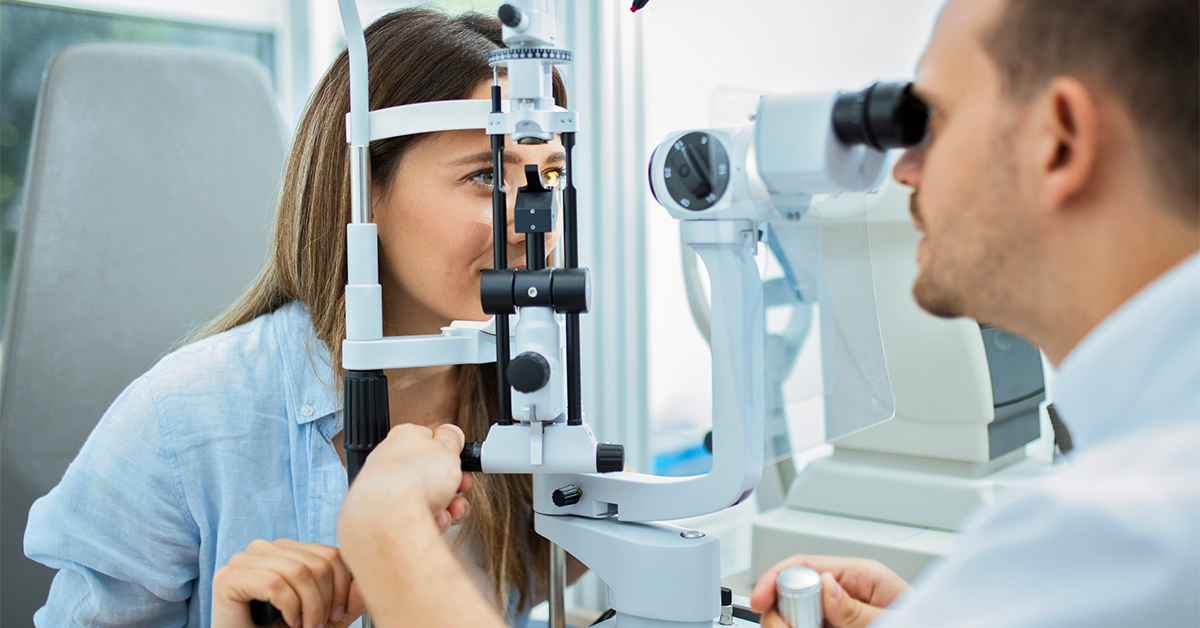Discover Advanced Solutions at Opticore Optometry for Eye Health
Discover Advanced Solutions at Opticore Optometry for Eye Health
Blog Article
Exploring the most up to date Technical Advancements in Optometry and What They Mean for Optometrists
In the ever-evolving area of optometry, current technological developments are reshaping how practitioners come close to eye care. From the accuracy of Optical Comprehensibility Tomography to the nuanced insights offered by AI-driven analysis devices, these technologies are setting new criteria in patient analysis and therapy. Teleoptometry is poised to redefine accessibility, guaranteeing that know-how goes beyond geographical limitations. As these advancements permeate the technique, eye doctors are encountered with the obstacle of embracing these devices to enhance patient outcomes. The inquiry remains: exactly how will these technical shifts redefine the roles and duties within the occupation?
Innovations in Diagnostic Equipment
Advancing the area of optometry, advancements in diagnostic tools have changed the means eye treatment professionals analyze and detect eye conditions and visual problems. The previous years has observed considerable technical advancements, making it possible for even more accurate and extensive evaluations. Optical Coherence Tomography (OCT), for instance, supplies high-resolution cross-sectional photos of the retina, allowing for the early discovery of illness such as glaucoma and age-related macular deterioration. This non-invasive imaging method has actually become indispensable in contemporary optometric technique.
Another trick innovation is the introduction of sophisticated corneal topography systems, which map the surface area curvature of the cornea with precision. These tools are specifically advantageous for suitable call lenses and detecting corneal conditions. Furthermore, digital retinal imaging has actually changed conventional ophthalmoscopy, using comprehensive, scenic views of the retina that help with thorough visual examinations.
The growth of wavefront aberrometry has also been crucial, making it possible for the evaluation of refractive errors with unequaled accuracy (Eye Doctor). This technology helps in personalizing corrective lenses and boosting medical end results for refractive surgical treatments. Jointly, these analysis advancements encourage eye doctors to provide premium client care, making certain very early intervention and customized treatment approaches, inevitably enhancing aesthetic wellness results
AI in Person Management
Structure on the structure of innovative analysis devices, the unification of expert system (AI) in person monitoring stands for a transformative jump for optometry. AI systems are progressively used to enhance performance, accuracy, and personalization in individual care. By analyzing huge quantities of data, AI can recognize patterns and predict potential ocular conditions, making it possible for eye doctors to customize interventions much more properly. This ability is important in taking care of persistent eye conditions such as glaucoma and diabetic retinopathy, where very early detection and constant surveillance are key.
In addition, AI-driven platforms help with streamlined person interactions and administrative processes. Automated scheduling, online appointments, and customized follow-up plans not only boost person contentment however also optimize time administration for professionals. These systems can triage individuals based on the urgency of their conditions, making sure that those in important need obtain timely interest.
Additionally, AI boosts decision-making by giving eye doctors with evidence-based recommendations and therapy paths. By incorporating data from electronic wellness records, AI tools offer insights that inform medical decisions, reducing the threat of mistakes and improving client end results. As AI continues to develop, its role in person monitoring will likely broaden, reshaping the landscape of optometric treatment.
Developments in Retinal Imaging
In the world of optometry, retinal imaging has actually Click Here witnessed impressive technical innovations that are enhancing analysis capacities and person care. Advancements such as Optical Comprehensibility Tomography (OCT) and fundus digital photography have changed exactly how eye doctors assess the retina and picture. OCT, particularly, offers high-resolution, cross-sectional pictures of the retina, enabling the comprehensive evaluation of its layers. This ability is very useful for early detection and administration of problems like glaucoma, diabetic retinopathy, and age-related macular degeneration.
Enhanced imaging modalities like OCT angiography are more refining diagnostic accuracy. Opticore Optometry. Such improvements assist in the recognition of min retinal adjustments that can represent disease development.
Additionally, improvements in synthetic intelligence are increasing retinal imaging by allowing automatic analysis of huge datasets. These systems help eye doctors in recognizing patterns a measure of pathology, thereby boosting analysis precision and performance. Jointly, these innovations are transforming retinal imaging into a cornerstone of modern eye treatment, boosting outcomes and expanding restorative possibilities.
Teleoptometry's Expanding Role
Teleoptometry is progressively ending up being a crucial element of eye care, driven by improvements in digital communication and diagnostic tools. As optometry welcomes digital improvement, teleoptometry promotes remote appointments, enabling optometrists to extend their solutions beyond traditional limits. This is specifically valuable in underserved and rural areas where access to specialized eye treatment is usually minimal. By leveraging high-resolution video conferencing and progressed retinal imaging, eye doctors can conduct comprehensive eye examinations from afar, making sure prompt diagnosis and therapy.
The integration of expert system (AI) more boosts teleoptometry, making it possible for the analysis of aesthetic data and assisting in the detection of ocular conditions such as glaucoma and diabetic retinopathy. AI-powered algorithms can rapidly interpret intricate imaging information, providing optometrists with important understandings that boost professional decision-making.
Moreover, teleoptometry sustains connection of care through smooth assimilation with electronic wellness records (EHRs), enabling optometrists to maintain comprehensive individual histories. This makes sure that clients obtain personalized and regular click here for more info treatment even when seeking advice from different experts.
In spite of these advantages, challenges continue to be, consisting of making sure data protection and managing client assumptions. Teleoptometry stands for a considerable stride in the direction of even more easily accessible, efficient, and patient-centered eye treatment. As technology develops, its function is positioned to expand better.

Future Trends in Eye Care
A myriad of cutting-edge trends is set to reshape the future of eye treatment, driven by technological advancements and the evolving requirements of people. One substantial pattern is the integration of artificial intelligence (AI) in diagnostics, which guarantees to improve the accuracy and efficiency of eye examinations. AI formulas can assess vast amounts of information from retinal images, possibly spotting problems like diabetic retinopathy and glaucoma earlier than standard techniques.
Moreover, tailored medication is gaining traction in optometry, with genetic testing informing personalized treatment strategies. This strategy intends to maximize person outcomes by tailoring treatments to individual hereditary profiles. Wearable innovation, such as smart call lenses, is additionally coming up, providing real-time tracking of intraocular pressure or glucose degrees, therefore giving continuous insights right into systemic and eye health and wellness.
The adoption of augmented fact (AR) and digital reality (VR) in training and client education and learning is another emerging fad. These modern technologies provide immersive experiences that can enhance understanding and abilities both for optometrists and people. As these trends develop, optometrists should remain abreast of technological developments to provide innovative treatment, making certain enhanced patient results and fulfillment in the vibrant landscape of eye care.
Final Thought

Jointly, these analysis advancements empower eye doctors to deliver superior client treatment, ensuring very early intervention and tailored therapy approaches, ultimately enhancing visual wellness end results.

As these modern technologies proceed to develop, eye doctors should adapt and include them right into method, eventually optimizing process performance and elevating the criterion of eye treatment provided to patients.
Report this page